The 10 Weirdest Medical Cases in the Animal Kingdom
Animal oddities
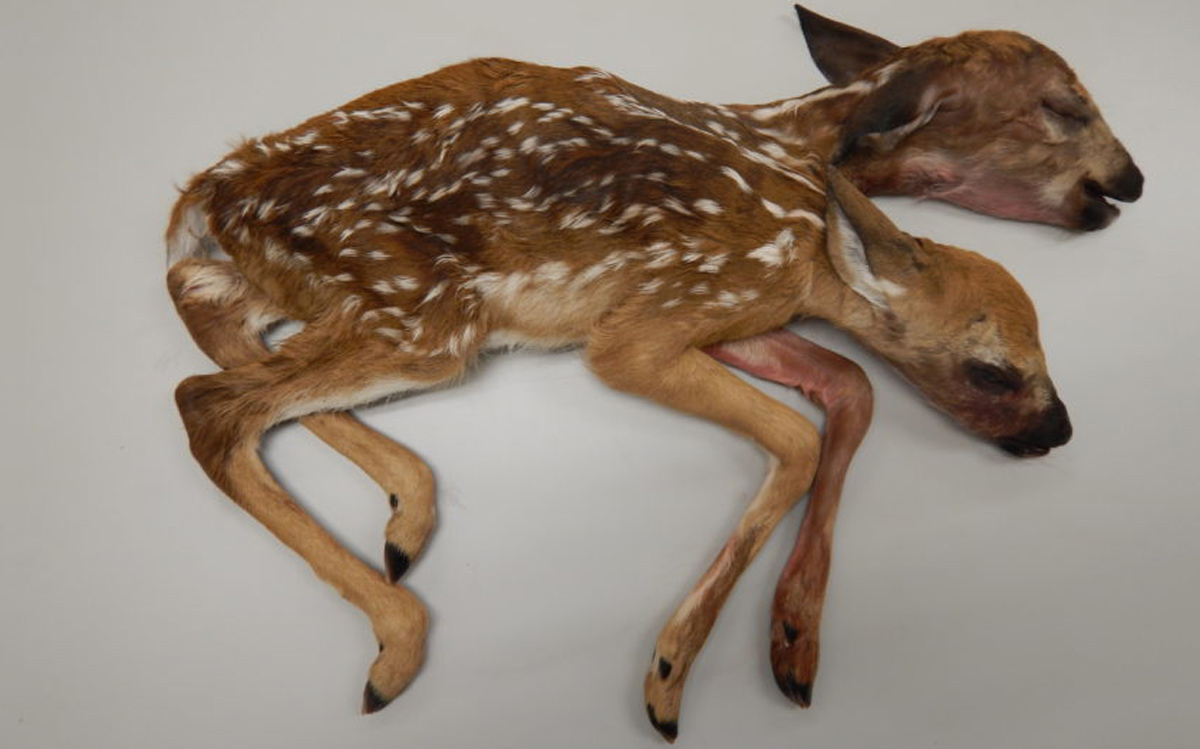
Animal scientists come across some weird, and sometimes heartbreaking, phenomena while doing their research in the wild. For instance, a deer with two heads found near the Mississippi River and a mountain lion with teeth and hair growing from its forehead are just two such oddball cases. Live Science takes a look at these and other medical oddities found in animals.
To deflate a hedgehog
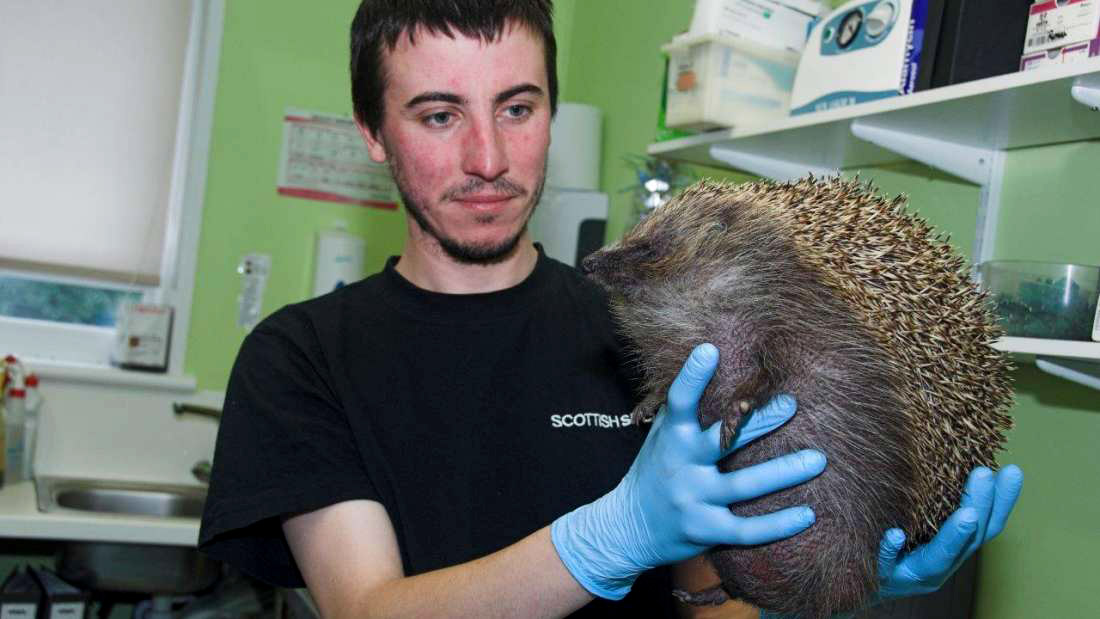
What do you do when you find a hedgehog on the side of the road puffed-up to the size of a beach ball? Take him to the vet to be deflated, of course. That's what happened in 2017 when a man in Scotland came across a wild hedgehog suffering from a rare condition called balloon syndrome. The hedgehog — later named Zeppelin by his rescuers — had a ruptured lung that was slowly leaking air into his body cavity, causing him to literally inflate like a balloon. Vets deflated Zeppelin back to his normal size by making some small cuts in his skin. The prickly patient healed quickly. [Read more about the puffed-up hedgehog]
Unbearable swelling

In 2016, two young Asian black bears were rescued from illegal sale in Myanmar, but the worst was yet to come. One of the bears, nicknamed Nyan htoo, had a tongue so swollen from an infection that the rubbery body part dragged along the ground when he played, and he could barely keep his head up. After two surgeries, vets removed all 6.6 pounds (3 kilograms) of Nyan's tongue, which was later diagnosed with elephantiasis — a swelling caused by parasitic worms transmitted via mosquito bite. Nyan htoo was back to playing with his brother bear again in no time. [Read more about the bear's extra-swollen tongue]
2 heads, 1 deer

A mushroom hunter discovered a bizarre sight while foraging in a forest near the Mississippi River. In an underbrush was a dead fawn — with two heads. This poor baby wowed scientists, becoming the first known two-headed white-tailed deer twins to be birthed. Using scans, researchers later found that the twins had one spinal column, two distinct necks, two heads, two esophagi, two fore-stomachs and two hearts. The researchers think that the two-headed marvel was probably delivered stillborn. But the fact that they were found groomed and in a natural position suggests the mother probably tried to care for them after birth. [Read more about the two-headed deer]
Forehead teeth

A hunter in Idaho couldn't believe his eyes when he tracked down this bizarre beast: a mountain lion with extra teeth and whiskers sprouting from the top of its head.
It's a mystery why the mountain lion had this deformity, but wildlife experts had two ideas. It's possible the teeth were the remains of a conjoined twin that died in the womb and was then absorbed by the surviving fetus. Or, perhaps the extra teeth and whiskers were a teratoma tumor — a benign growth typically filled with teeth and hair. [Read more about the rare mountain lion]
Deer and an arrow
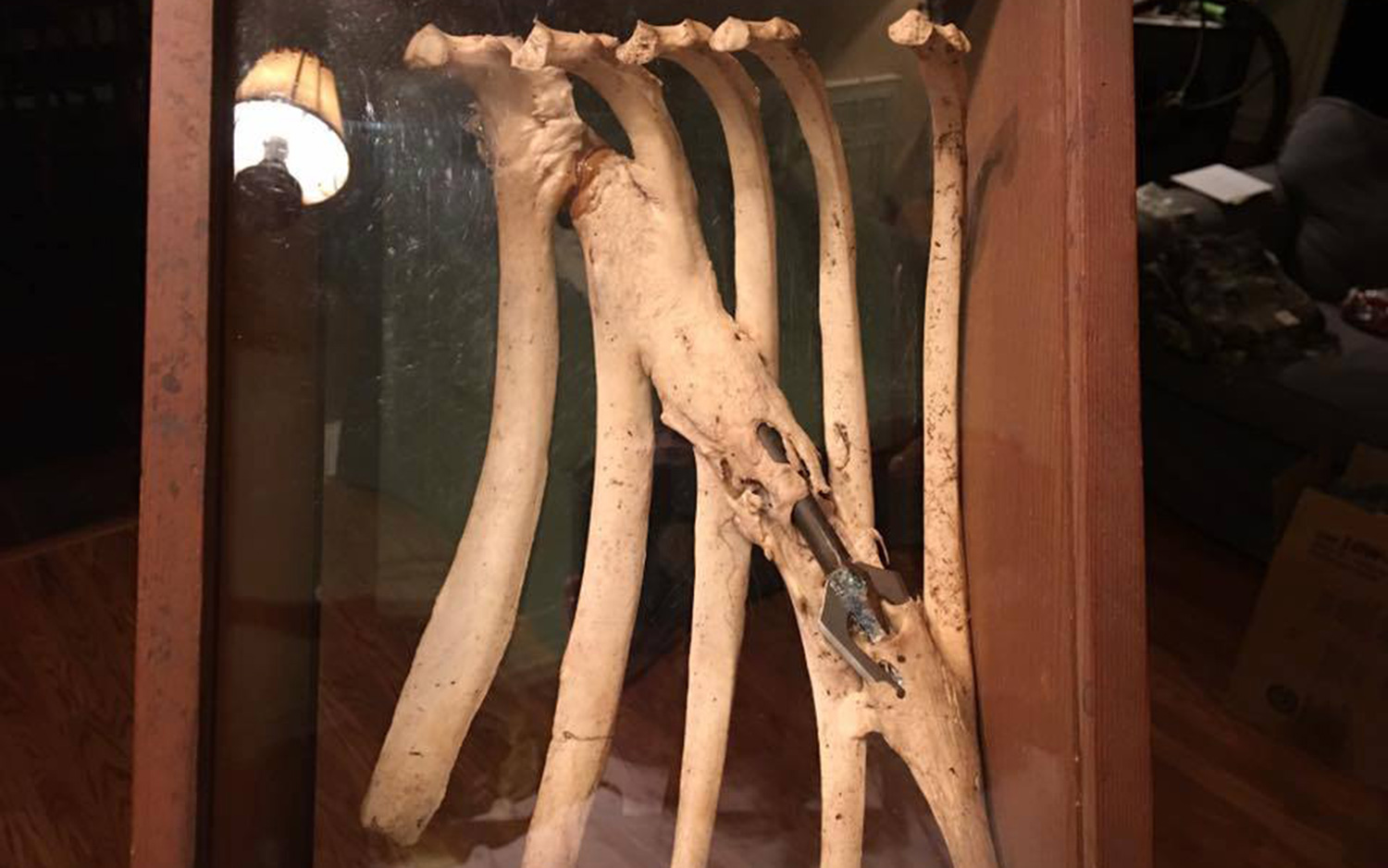
A hunter that killed a deer in North Carolina got a big surprise when he cut the animal open — the deer had an arrow lodged in its ribs, almost entirely overgrown with bone.
Get the world’s most fascinating discoveries delivered straight to your inbox.
The hunter mounted and framed the unusual rib cage; a photo of the skeletal oddity was posted on Facebook by the Utah Conservation Officers Association, and the image was later shared on Twitter. According to the hunter's son, who currently owns the mounted ribs, the deer appeared healthy when his father shot it, about 30 years ago. In fact, it's not uncommon for bone tissue to grow around a foreign object inside a body, Yara Haridy, a doctoral student at the Natural History Museum in Berlin, told Live Science in an email. The original injury probably included several broken ribs, and the arrow likely acted as a splint, helping the dear to heal as bone enveloped the shaft, Haridy said. [Read more about the deer-arrow oddity]
Sniffly gorilla
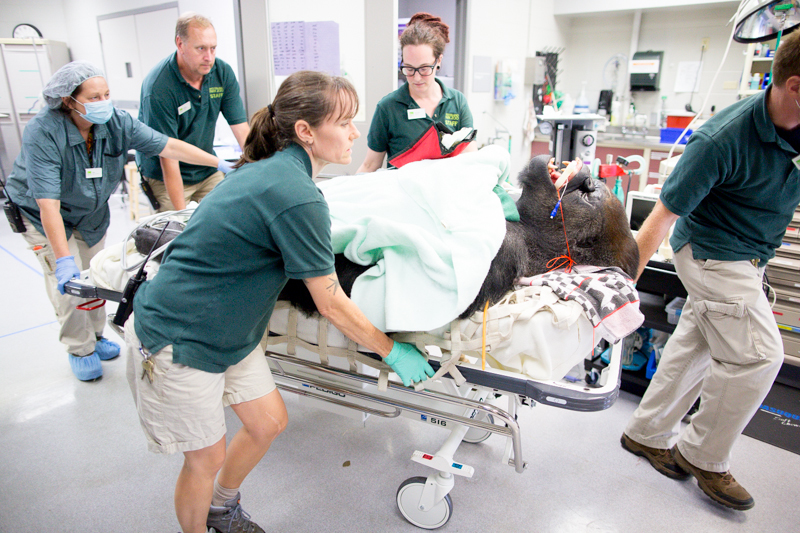
When Vip got a sniffly, runny nose, zookeepers at Seattle's Woodland Park Zoo gave the western lowland gorilla a round of antibiotics. But that didn't work, and a computed tomography (CT) scan soon revealed that Vip had a severe, but operable sinus infection. So, Vip's caretakers tried a more drastic approach: sinus surgery.
A local doctor donated his time and did a 4-hour surgery, removing pus, tissue and bone so that Vip would be able to breathe easy.
The surgery was a success, but the doctor — who, of course, normally operates on people — said that he couldn't stop looking at Vip's giant fangs and enormous head during the operation. [Read more about the gorilla's operation]
Fishy bear
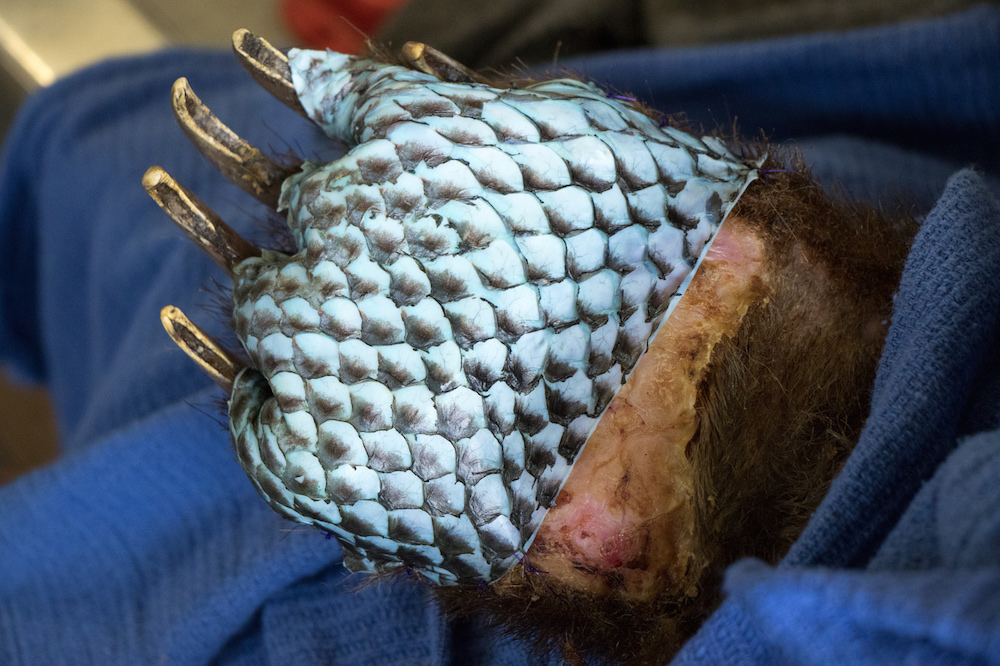
After a bear was badly burned by a California wildfire in 2018, its treatment turned out to be a little fishy.
The animal's paws were damaged during the deadly Thomas Fire, the state's largest wildfire in modern history. And when wildlife officials treated the injured bear, they wrapped its singed paws in an unusual bandage — tilapia skin. In Brazil, fish skin had previously been used to treat human burn victims; because it is high in collagen, a structural protein found in skin, it may reduce the need for skin grafts, researchers wrote in 2011.
For the injured bear, a veterinarian slathered salve on the wounds, then stitched tilapia skin onto the animal's paws, after it had been anaesthetized. To keep the bear from gnawing at the dressings — fish is a staple in many ursine diets — its paws were wrapped in protective layers of rice paper and corn husks. The same treatment was later applied to another bear and a mountain lion whose paws had also been burned in the Thomas Fire.
Long in the tooth
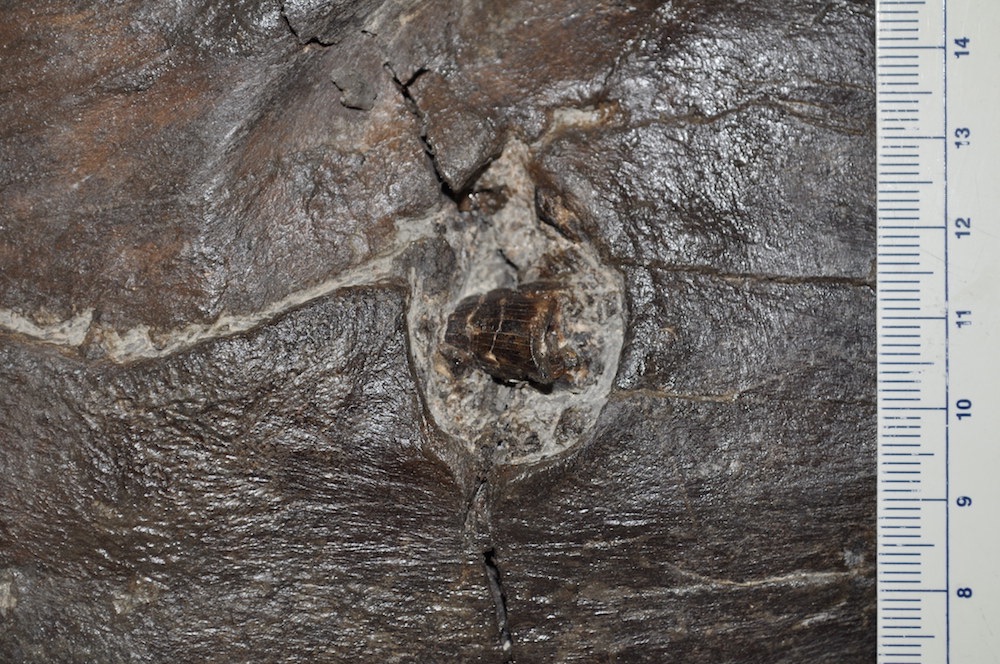
In 2016, paleontologists unearthed evidence that a pair of mosasaurs — extinct marine reptiles that lived alongside dinosaurs — went head-to-head around 75 million years ago. And the mosasaur on the receiving end of the attack swam off with a gruesome souvenir of the battle embedded in its lower jaw — one of its attacker's teeth.
There were three lesions in the mosasaur's skull, one of which held the broken-off tooth. All appeared to be on the mend when the animal died, suggesting that it survived the attack. The angle and position of the wound hinted that the bite, while forceful, was meant to subdue the mosasaur but not kill it, and the tussle may have sparked between two males as part of a competition for a mate, according to one of the scientists who described the fossil. [Read more about the toothy mosasaur]
Otter asthma

Mishka is the first sea otter (Enhydra lutris) on record to be diagnosed with asthma; luckily, she's in good hands. The baby sea otter was found tangled in a fishing net off the Alaskan coast in 2014, and the Seattle Aquarium took her in because the otter pup never learned how to fend for herself.
When Mishka (whose name means "little bear" in Russian) was about 1 year old, she had a full-blown asthma attack, likely triggered by smoke from forest fires in eastern Washington. There weren't any otter inhalers (after all, Mishka was the first patient), so aquarium staff taught her how to use an AeroKat, an inhaler designed for cats.
Now, Mishka knows how to press her nose against the AeroKat, which then releases aerosolized medicine for her to inhale. Breathe deep, Mishka! [Read more about Mishka's asthma]
Naked mole rats ... and cancer

Naked mole rats are resilient rodents, living around nine times longer than other mammals of the same size. They were known to not get cancer, even when researchers tried to induce the disease, thereby serving as ideal subjects for studying anti-aging or anti-cancer mechanisms. But in 2016, a report came out documenting the first cases of naked mole rat cancer. A 22-year-old male naked mole rat in a Chicago zoo developed a malignant tumor in its chest. Though researchers successfully removed the tumor and stopped the cancer growth, a second male naked mole rat wasn't as fortunate. The 20-year-old mole rat was euthanized after developing an intense rash on its face and weight loss, which turned out to be the result of cancer of the hormonal and nervous systems. [Read more about naked mole rat cancer]



